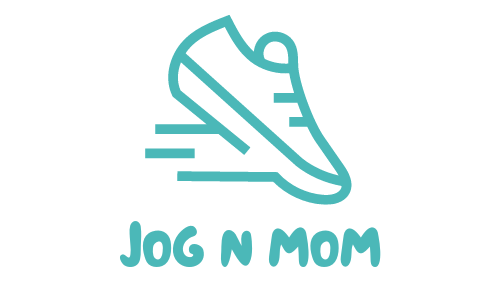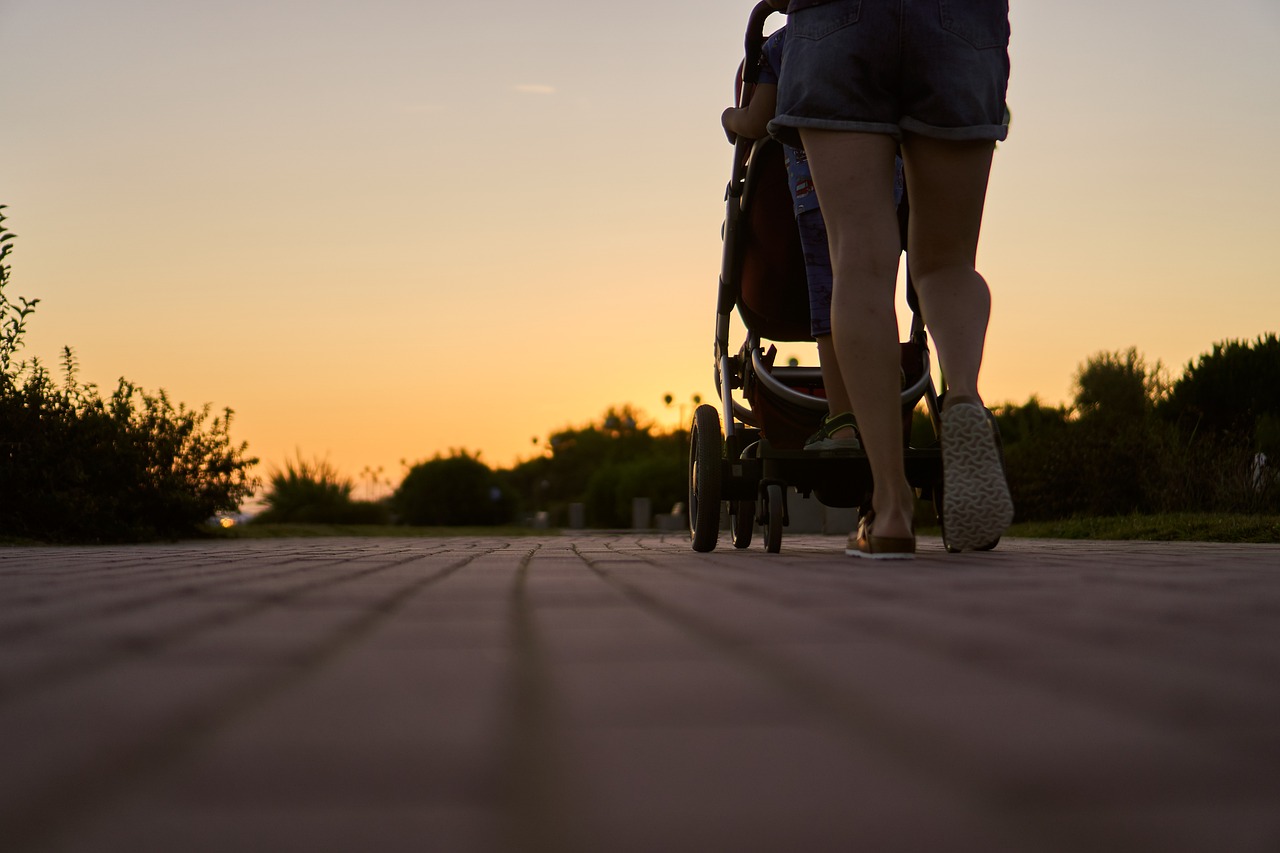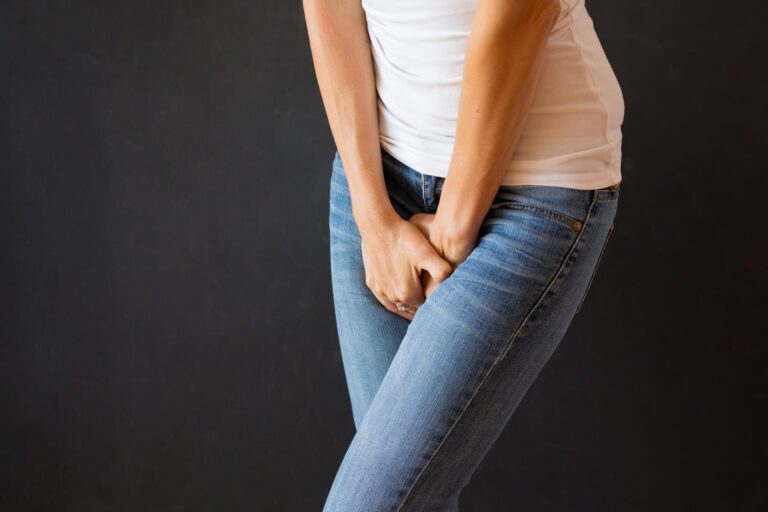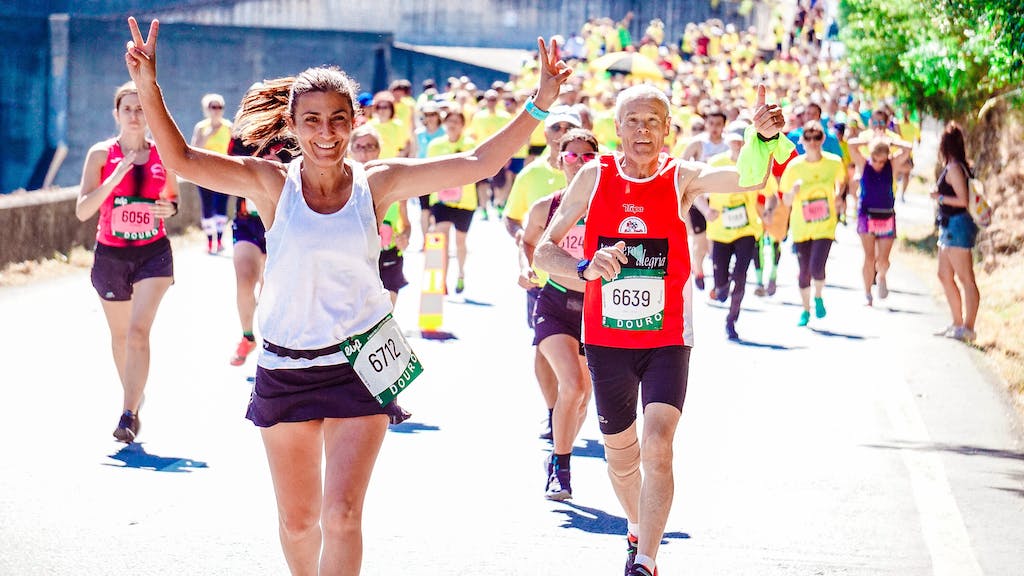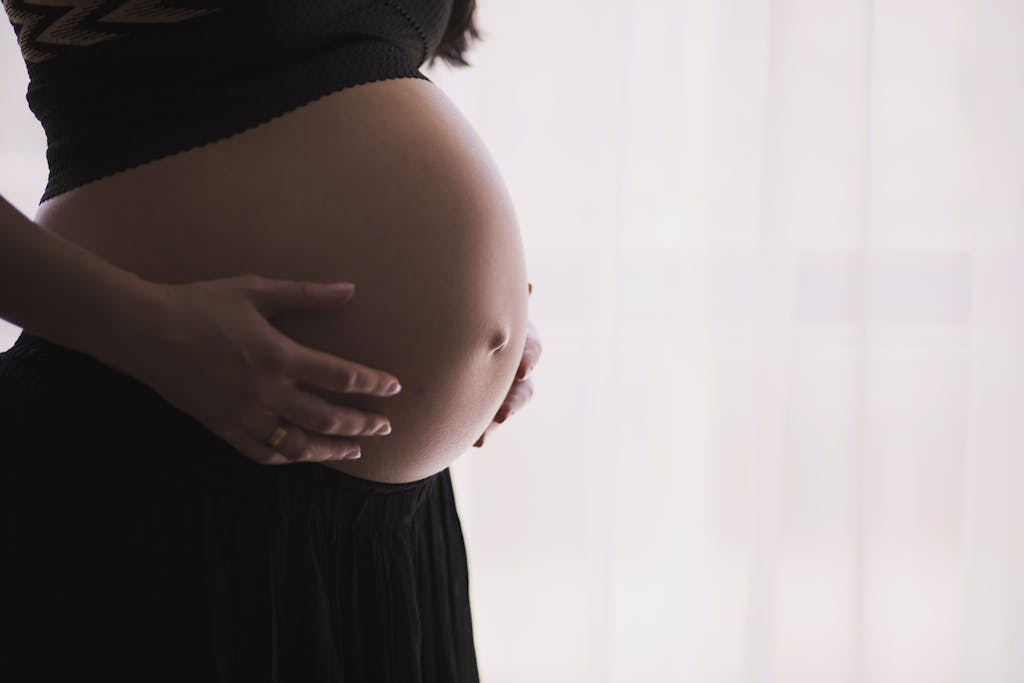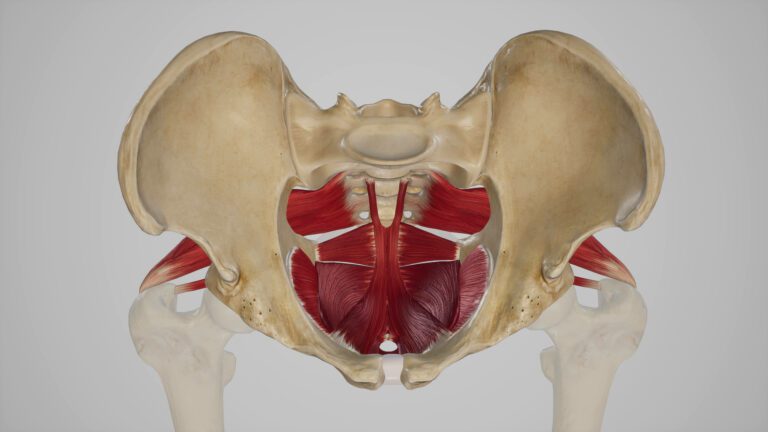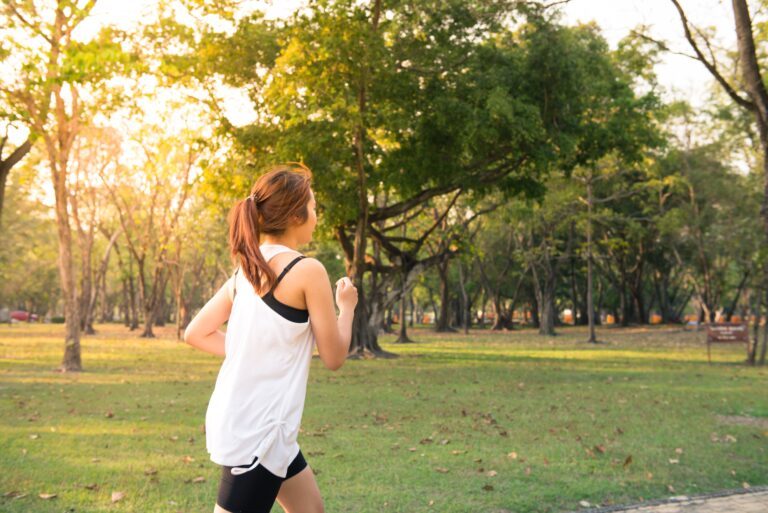Postpartum Walking Guide
After giving birth to my first child, I had to wait for the effects of the epidural to wear off before I could walk to my postpartum room at the hospital. However, just a few days after leaving the hospital, I was already taking short walks outside with my husband and daughter.
During my second childbirth, I opted for a natural birth and did not take any medications. Unlike my previous birth, I was able to walk immediately after giving birth and was discharged from the hospital within a few hours. However, it took me almost three weeks before I could go outside for a walk due to having a tougher physical recovery. Even walking to my doctor’s appointments was quite challenging for my body during this time.
My two postpartum experiences were radically different from one another, and postpartum recoveries are often very different from one mom to the next. With each postpartum experience being unique, it can be challenging to find concrete information regarding when to start walking and how far to go. After giving birth, simple things that were once taken for granted, like walking, now require much more physical and mental effort.
Use this postpartum walking guide to understand guidelines for walking postpartum that work for your individual situation.
Is it safe to walk after giving birth?
Safety
Walking is one of the first exercises you should attempt after giving birth for several reasons. Our bodies are not meant to engage in strength workouts too soon after giving birth. Initially, taking care of our babies is plenty of work. Diaphragmatic breathing and gentle stretches are the only other recommended movements in the first few weeks postpartum. After giving birth, it’s important to rest, but it’s also important to prevent stiffness and pain. Because it is low-impact, walking is a safe exercise that can be started soon after giving birth and offers various benefits, including pain relief.
Symptoms to Watch for
It is important to pay attention to your body and consult with your care provider regarding your specific postpartum situation. Certain complications, such as hematoma or postpartum hemorrhage, may require more rest, and walking immediately may not be recommended by your care provider.
If you experience any of the following symptoms, it is crucial to decrease your activity level and seek medical attention:
- bleeding that is soaking through a pad in an hour
- passing clots that are bigger than your fist
- extreme feelings of weakness
- feelings of dizziness
- shortness of breath
- nausea or vomiting
If you experience any of these symptoms, take a break and resume walking after a few days of rest:
- mild to moderate increase in bleeding
- pelvic pain or discomfort
- feelings of pelvic heaviness
- mild to moderate levels of fatigue
What are the benefits of walking postpartum?
After giving birth, walking has many benefits for the mother, baby, and family. While it can feel difficult to find the time or motivation while feeling sleep-deprived and taking care of a newborn, the benefits of walking postpartum make it worth the effort.
Promotes Healing
Moving your body, even a little, after giving birth helps your body heal by increasing blood flow. Blood flows to injured areas of our bodies and removes waste through our lymphatic system. The quicker the mother heals, the sooner she can begin to feel better and resume activities she enjoys.
Reduces Stiffness
It is essential to rest after giving birth, but staying in one position for too long can cause stiffness and pain in our bodies. Common sitting and holding postures while feeding our babies can lead to tailbone, neck, and back pain. Walking, even for just a short while, can warm up the muscles and change their position to reduce tension and alleviate pain.
Improves Mental Health
Many women experience various mental health issues after giving birth due to factors such as hormonal changes, lack of sleep, and more. These issues can include baby blues, postpartum depression, postpartum anxiety, postpartum rage, and others. According to the American Pregnancy Association, around 70-80% of new mothers experience negative feelings or mood swings after childbirth. However, walking and getting vitamin D can help release endorphins in your brain and improve your mood, which can naturally combat baby blues and depression.
Relieves Stress
After giving birth, many mothers experience stress, which could be due to a lack of support, the pressure of caring for a newborn, struggles with breastfeeding, and more. Walking can help to relax both the mind and the body by releasing endorphins. Moreover, it provides an opportunity to clear your mind and change your environment from the confines of your home walls.
Increases Strength
If you’re eager to return to the gym after giving birth, it’s important to remember that initially, all your body needs is walking to start regaining strength. Walking is highly effective at building strong bones and muscles, more so than you might realize. Walking helps build lean muscle mass and functional strength. If you hold your baby or babywear while you walk, the added resistance will strengthen your muscles even more. Make sure your body and back are able to handle that extra resistance. If not, you can always push them in the stroller or have someone else wear them instead.
Boosts Energy
Walking is a great way to increase energy levels. When you walk, your body releases endorphins, which help to boost energy. Additionally, walking helps move oxygen throughout your body, which is important for overall health and can further increase your energy levels. Even though you may feel exhausted postpartum, taking just a five-minute walk can help boost your energy levels in a healthy way without the need for caffeine.
Lowers Blood Pressure
Many new mothers are unaware that blood pressure can be a problem to watch for after childbirth, whether they previously had issues with their blood pressure during birth or not. Taking short walks is a natural way to lower blood pressure and avoid the need for medication or another hospital visit.
Improves Cardiovascular Health
Walking is a form of cardiovascular exercise that can increase heart rate and burn calories. After going through the incredibly taxing experience of giving birth, even just mild cardiovascular exercise will be enough to challenge your body and improve your heart health. You do not need to speed walk or run to benefit.
Improves Baby’s Health
Babies are often overlooked in terms of needing fresh air and sunshine, but they are just as human as adults and can benefit greatly from spending time outside. Even if they are asleep while you take them for a walk, being outdoors can be very helpful for their health by giving them vitamin D, improving their immunity, and even preventing allergies!
In fact, babies with mild jaundice may be sent home and encouraged to use sunlight to help regulate their bilirubin levels as long as they come back for more testing. This is what happened with our daughter, and we found that exposing her to sunlight was very beneficial for her recovery from jaundice.
Promotes Family Bonding
Going for walks is a wonderful way for your new family to bond. Men often find it easier to share their thoughts and feelings during shoulder-to-shoulder activities rather than face-to-face conversations. Walking together can provide a great opportunity for your husband to express himself and for you to actively listen and be heard as well.
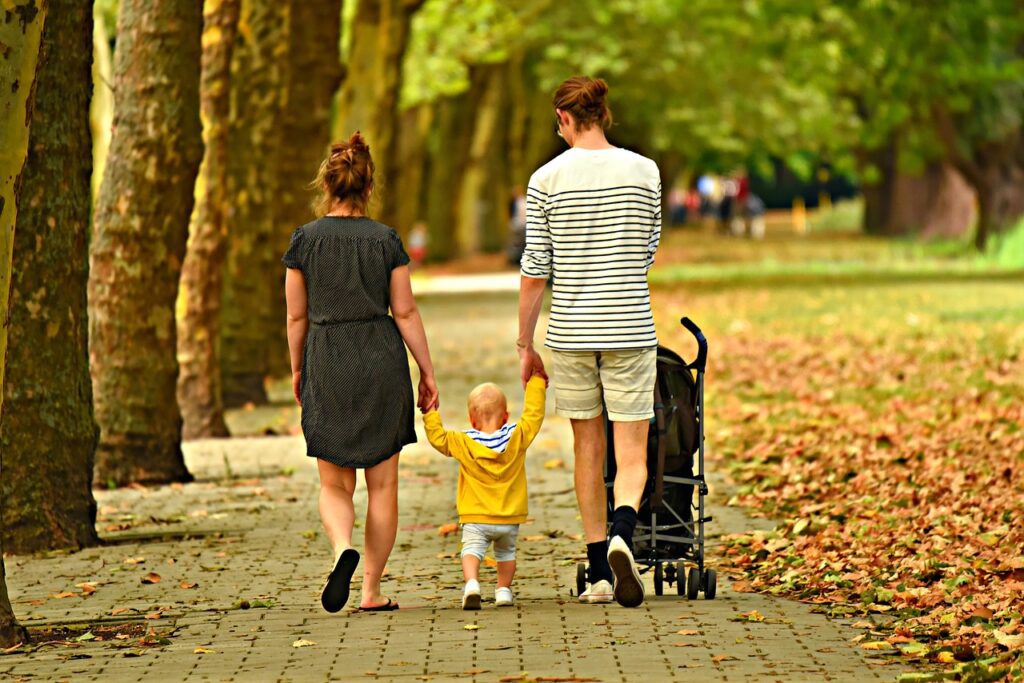
When can I start walking after giving birth?
When to Walk Postpartum
Once you are no longer experiencing any major side effects of medication or blood loss from birth, including numbness and lightheadedness, you can start walking. Initially, your walking may be limited to taking a few steps to the bathroom. After a few days of being at home, you may feel ready to take a short walk around the block. However, it’s also possible that you may not feel ready to walk for a few weeks.
When NOT to Walk Postpartum
It is crucial to pay attention to your body and your healthcare provider’s advice regarding your individual situation. Do not try to keep up with your friend who was back at workout class three weeks postpartum or your mom who was taking walks the day after she gave birth. Allow your body to rest and recover at its own pace, and always reduce your activity level if you experience any signs of bleeding, weakness, or any other alarming symptoms. Your body will heal more quickly if you don’t put it under stress that it is not prepared to handle.
A Good Rule to Follow
An increasingly popular way of approaching postpartum recovery is to follow the 5-5-5 rule. This rule entails spending five days in the bed, five days on the bed, and five days around the bed. The first five days you should expect to spend laying in bed, breastfeeding, cuddling with your baby, etc. In the next five days, you might start to sit up more while still continuing to bond with your baby. In the last five days, you can stand near the bed and try light activities such as folding laundry if you feel up to it.
It’s important to communicate your expectations with your support system, as you cannot follow the 5-5-5 rule on your own. You will need someone to take care of basic tasks like bringing you meals in order to rest as much as is suggested.
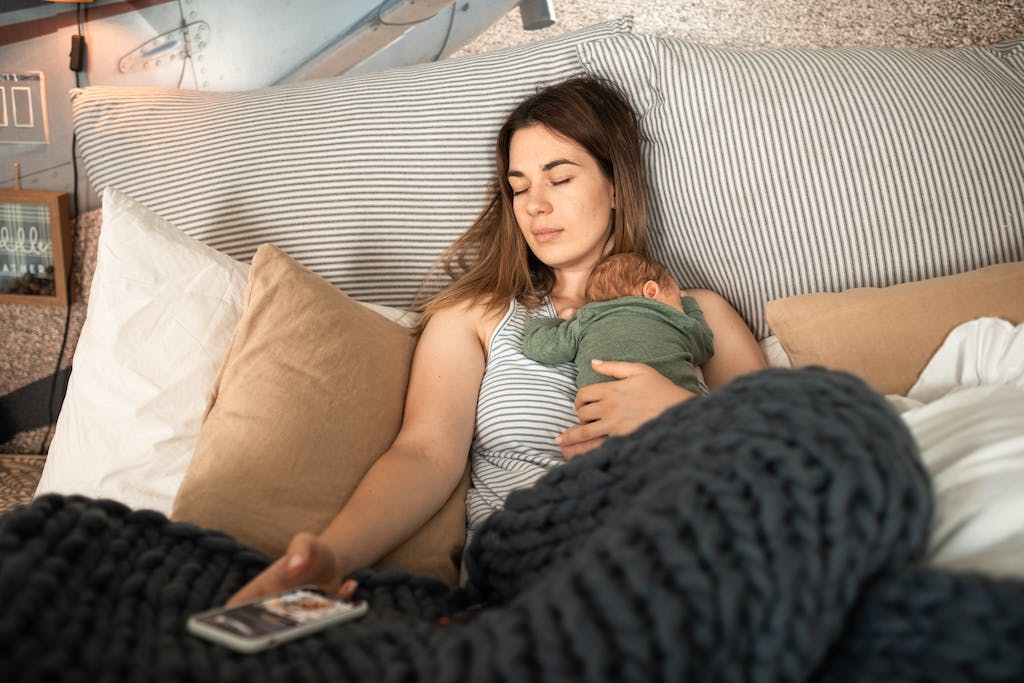
Does walking burn as many calories as running? Will it help me lose weight?
Levels of Impact
Walking and running both have similar benefits, such as improved cardiovascular health and mood. However, walking is a low-impact exercise, while running is high-impact. After giving birth, the pelvic floor is not ready for high-impact exercises like running. Engaging in low-impact exercise is a great way to continue moving your body without risking injury. If you are interested in running after giving birth, it is important to learn how to start running postpartum to establish a healthy foundation and avoid further injury.
Calories Burned
Walking burns calories, but not as much as running does in the same amount of time. On average, a person burns about 100 calories per mile. Running allows you to cover that distance in a shorter amount of time. Running is a great goal to work towards over several months after giving birth, but it is not recommended in the early postpartum period. However, walking has its own benefits, especially during early postpartum recovery. Regardless of the distance you walk, it’s a great way to burn an appropriate amount of calories and improve your health.
Effects on Weight Loss Postpartum
It is understandable to want to lose weight gained during pregnancy after having a baby. However, it is important to remember that your body needs time to heal and recover from the physical stress of giving birth. Your main focus should be on nourishing your body and not depriving it, especially if you are breastfeeding. While it’s okay to keep your caloric intake in mind, it’s recommended to wait at least twelve weeks postpartum before considering weight loss. If you’re breastfeeding, it’s essential to consume enough calories to maintain a healthy milk supply, so make sure to eat enough good calories. Walking is a great way to stay active and promote natural weight loss, but it’s not necessary to worry about it too much immediately after giving birth.
How much can I walk after giving birth?
During the first month after giving birth, you can consider outings such as visits to the doctor’s office or grocery store as one walk. However, if you experience any increase in bleeding, pain, feelings of heaviness, dizziness, weakness, or any other discomfort, it’s important to cut back on your walking and rest. You can try again in a day or two, but prioritize your recovery and listen to your body’s needs.
Postpartum Walking Plan
If you are eager to start exercising and feel good while doing so, you can use the following plan as a loose guide. The suggested amount of walking is not mandatory, so it’s important to listen to your body and do a little more or a little less, depending on how you feel. The key is to do what works best for you.
- Week 1: It’s important to prioritize rest. Take short walks only to the fridge or bathroom and consider a very brief outdoor walk if desired.
- Week 2: It’s still recommended to prioritize rest while beginning to try to sit in a more upright position. If desired, take 5 to 10 minute walks outside daily.
- Week 3: Begin to take one 10-20 minute walk daily.
- Week 4: Take one 15-25 minute walk daily.
- Week 5: Take a 30 minute walk daily as desired, at least three times a week. If you experience any issues, scale back and let your provider know at your six week visit.
- Week 6: Take 30-45 minute walks daily as desired, at least three times a week. After you’re cleared by your provider, begin incorporating low-impact strength training.
Is there a proper form I need to pay attention to?
It may come as a surprise to many moms that they need to consider their form when walking postpartum. Your body has undergone a significant event and now needs to learn how to execute coordinated movements in your new body. To ensure you stay on track and avoid further injury, follow these tips:
- Maintain a neutral spine– After giving birth, many mothers tend to arch their backs or tuck their butts too far underneath while clenching their glutes. Either extreme can eventually lead to pain and injury. Check your posture in a mirror to ensure your spine is aligned properly.
- Check your shoulder position- It’s important to keep your shoulders down and back. After giving birth, many of us tend to hunch forward and let our shoulders creep up to our ears because we’re frequently holding and feeding our babies. To avoid this, make sure you stand up straight with your shoulders down and back. When you assume this posture, your hands will lie flat at your sides with your thumbs pointing forward, not towards your body.
- Engage your core– Walking is a great opportunity to practice diaphragmatic breathing and engaging your core muscles. The higher you lift your knees while walking, the more your core muscles will have to work to support your back. Engaging your core muscles will not only prevent low back pain but also promote a healthy posture by keeping your spine in a neutral position and strengthening your core muscles.
- Considerations for babywearing– If you plan on babywearing during your walk, it’s important to follow the tips listed above while also watching for any back pain or pelvic heaviness. If you experience back pain, check the manual that came with your wrap or carrier to ensure that everything is positioned correctly. If you feel pelvic heaviness, it could mean that the wrap is too tight or that your body is not yet ready to support the weight of you and your baby. In that case, take a break or consider using a stroller to push your baby. If you still have back pain later on, try a carrier style instead of a wrap. As my babies grow older, the wrap style becomes uncomfortable for my back. However, I find that a carrier provides enough support to alleviate back pain.
- Considerations for pushing a stroller – Pushing a stroller is an excellent way to spend time with your baby outdoors, while also giving your back and arms a break. In the initial days after giving birth, you may find it helpful to lean on the stroller for support. However, as you continue to heal, make sure you avoid hunching over the stroller while pushing it. This will help you prevent back and neck tension and aches.

Conclusion
Every baby, mother, birth, and postpartum experience is different and unique. During my second postpartum recovery, I faced unexpected complications such as multiple tears, a hematoma, blood loss, and a burst stitch, which made it necessary for me to sit and rest for at least three weeks. Although I was surprised, I listened to my body, which helped me heal at the right pace for me. Even though friends were recovering faster than I was, I made sure to rest, ask for help, do what gentle movements I could, and wait for my body to feel ready before I began walking.
Whether you have a fast or slow postpartum recovery, walking is one of the first forms of exercise you should attempt. It is a safe and healthy way to improve your physical and mental health quickly after giving birth. To ensure that your walks are helpful and not harmful, it is important to focus on having the proper form, timeline, plan, nutrition, and sleep. Regardless of your postpartum recovery experience, walking can help you heal as you progress through your recovery journey after birth.
What has your experience walking postpartum been like? Do you have any tips to add? Comment below!
